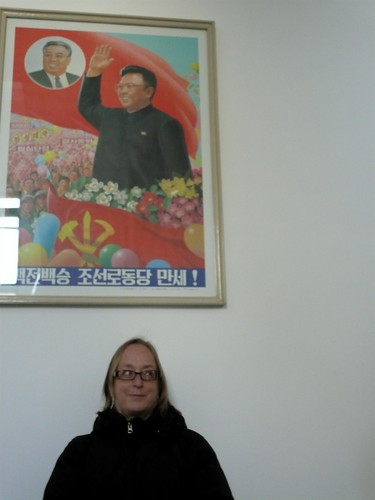
When the idea was first broached last October of a New York Philharmonic concert in Pyongyang, I didn’t know what to think. I am a violist, not an international affairs student, and I, like many Americans, knew very little about North Korea. I knew, of course, that it had been named as a member of George Bush’s oft-ridiculed “Axis Of Evil”. I knew that it was perceived in the west as a nuclear threat. I knew that its ruler, Kim Jong-Il, was an unpredictable and dangerous despot. But beyond those basics, I had never given it much thought. That was soon to change.
As plans evolved and the prospect of a trip to the Hermit Kingdom became more real, I decided to educate myself about this little-known place. I was not the only Philharmonic member to do so. YouTube documentaries began to circulate. Books were ordered. Discussions began in earnest. The more I learned, the more I wanted to know.
Among the facts I learned: North Korea has one of the worst human rights records in modern times. There are huge punitive labor camps in the north where hundreds of thousands of people are imprisoned, including whole extended families. Recent UN reports indicate that 12% of the people are starving, while scarce resources are siphoned off for the military and the elite. Most aid agencies have left North Korea after having been denied access to those in need. Public executions are on the rise. There is no freedom of expression or freedom to travel, even within the country. There is no freedom of the press. Cellphones are illegal, as are international phone calls. There is no internet. Food is strictly rationed according to perceived loyalty to the regime. Electricity and heat are in short supply. Few come, and even fewer leave.
These facts alone provoked many difficult questions about our visit. Were we being used as pawns in a propaganda game? Would our visit serve to lend credence to Kim Jong-Il, or, as argued by the State Department, would it help to crack the door to eventual regime change? Would we merely be entertaining the elite, or would we be agents of change? Who would be able to hear the concert? Is it unethical to spend money and resources on a concert when people were starving? Could I morally attend a banquet provided by the very government that denies adequate rice to its citizens? Should we, as musicians, try to use the opportunity to make political statements? What if Kim Jong-Il attended the concert? Would we have to stand to honor him?
These and many other questions swirled in our heads and were hotly debated both in public and private. Some were answered, but we may never have answers to others. Even after the event, the debate continues both among the musicians and in the press.
In the end, the decision to go was not in the hands of the musicians. I was by this time fascinated to see this place I had read so much about, and I became determined to see and learn as much as I could in my attempt to understand this deeply enigmatic nation.
The trip only fueled my curiosity; even now I am actively searching out new sources of information.
The following account, in 3 parts, is an illustrated journal of my too brief but fascinating experience: A Violist in the DPRK.
If after reading this you are interested in seeing more photos of our tour, please check out my Flickr page:
http://www.flickr.com/photos/13338199@N08
The concert itself is available for viewing at nyphil.org and at pbs.org.
If you are interested in reading more about North Korea, I highly recommend "Pyongyang: A Journey in North Korea", by Guy DeLisle. It is a highly entertaining and accurate graphic account of his stay in Pyongyang. I also recommend "Under the Loving Care of the Fatherly Leader", by Bradley K. Martin. It is the definitive study of the DPRK; an imposing tome, but very readable and fascinating. Another interesting book is "North of the DMZ: Essays on Daily Life in North Korea" by Andrei Lankov, a lecturer on Korean History at Australian National University. He lived in Pyongyang as a student in the 1980s.
For video resources, I recommend the National Geographic documentary " Inside North Korea", and the current series on vbs.tv, "The Vice Guide to North Korea". There are also numerous documentaries on YouTube.com, including an excellent Dutch film called "Welcome to North Korea.
Enjoy!
Dawn
4 comments:
Wow - sounds like your trip was... along a similar route - haha. Sure is a VERY 'guided tour'. Glad you liked the piece on www.VBS.tv - last part airs today. Thanks for the positive comments!
That was really interesting! I heard about this trip and I also had mixed feelings. It's interesting to read something from the viewpoint of a non-tourist. I really hope this marks a turning point for the North Korean people.
Thank you for posting this! fascinating, scary, sad...
It's August 2008. I was directed here from the Vice site. I agree it's hard to decide whether to travel to represive regimes but think you have the right idea. Positive contacts make for a better world. Well done blog. Very enjoyable
Post a Comment